A Life in Jewellery: The Goldsmiths’ Company Collection Celebrates New Acquisitions by Dorothy Hogg
The Goldsmiths’ Company is delighted to announce the acquisition of a series of seminal works by renowned Scottish jeweller Professor Dorothy Hogg MBE.
The pieces, which have been acquired both through The Scottish Gallery in Edinburgh and direct from Hogg herself, represent key moments in the maker’s life as an unparalleled craftswoman and a highly influential teacher of silversmithing and jewellery. The Company Collection already held one piece by Dorothy Hogg, the dynamic, musical ‘Bangle with 100 Rings’, acquired in 1997. The Company is now lucky enough to hold one of the largest and most significant collections of Hogg’s work in the UK.
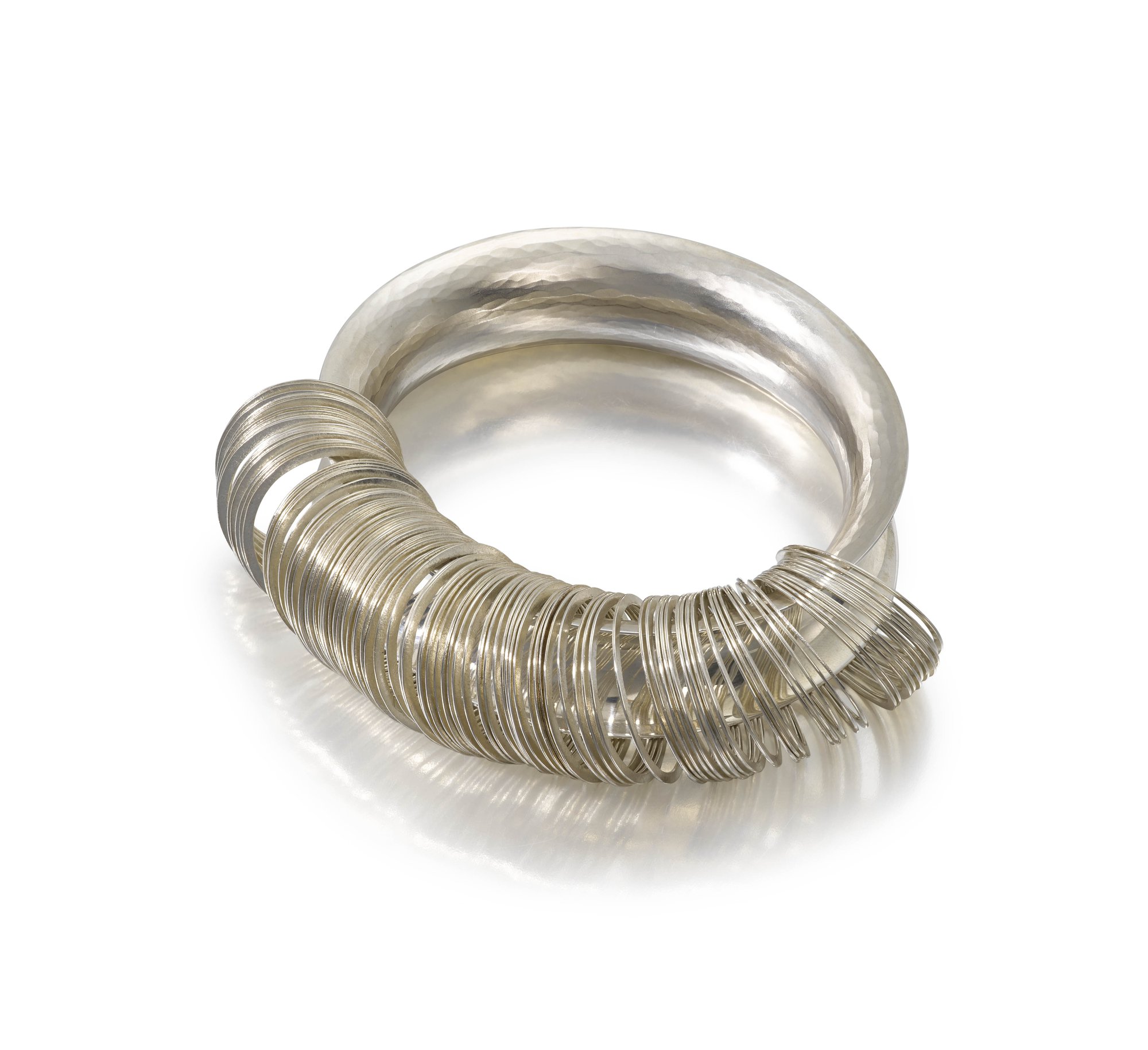
‘Bangle with 100 Rings’, Dorothy Hogg, 1997, silver. Photograph: Clarissa Bruce
Dorothy Hogg’s highly accomplished work has a strong lyrical element. She talks of a desire to make work which expresses an inner voice and articulates where she is in life. Hogg grew up on the Ayrshire coast, and her work, primarily in silver, is full of the muted silver-grey colours of the Scottish seascape. Her father and grandfather were both clock- and watchmakers who ran jewellery shops, and Hogg recalls a childhood spent in the ‘back shop’ watching her father work on ‘the tiny, beating heart of a watch’ in the light from the window while her aunt strung pearls in the corner. A fierce precision characterises Hogg’s own work, which often incorporates both sound and movement. Her ‘Bangle with 100 Rings’, made in 1997, is a convex silver bangle with one hundred identical free running discs of silver wire looped around it. The rings slide around the bangle and chime together when it is worn.
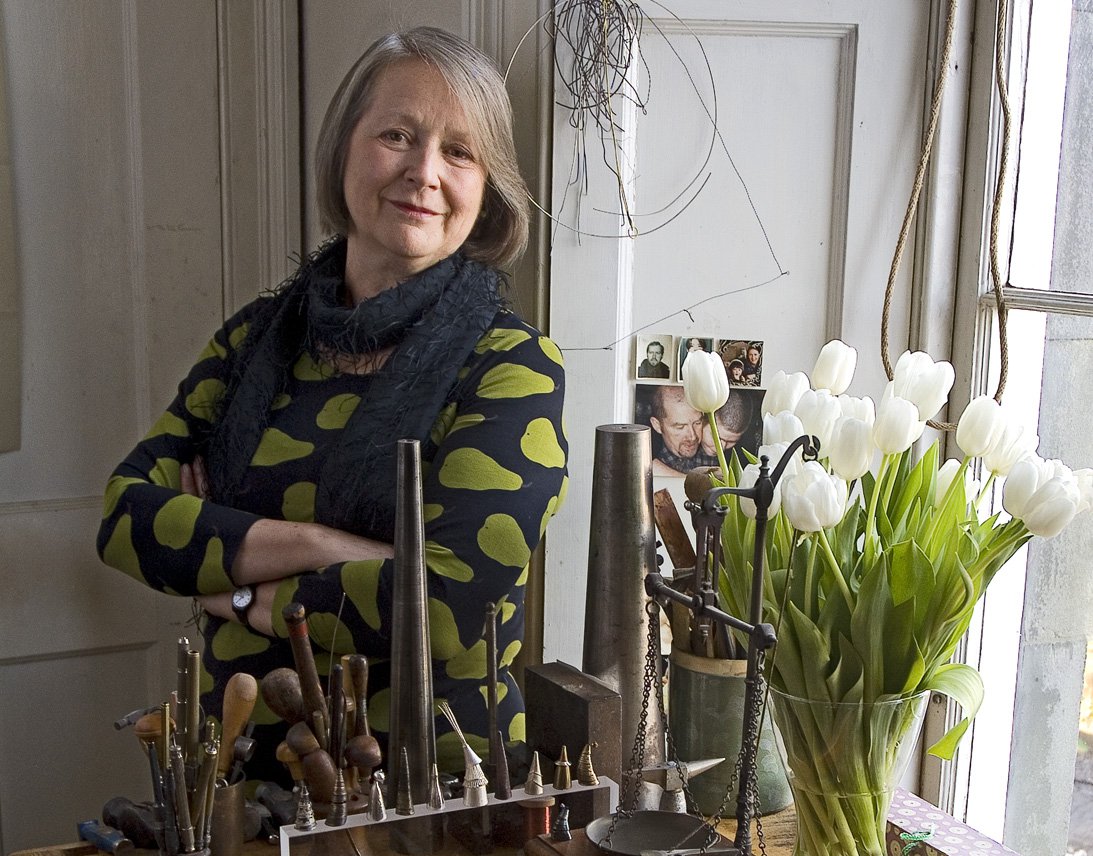
Image of Dorothy in the workshop. Photograph: John K. McGregor
After studying at Glasgow School of Art and the Royal College of Art, Hogg began teaching jewellery and silversmithing in 1970. She taught initially at Duncan of Jordanstone College of Art in Dundee and Glasgow School of Art, before becoming Head of the Jewellery and Silversmithing Department at Edinburgh College of Art in 1985. She recalls the clarity of purpose she felt on accepting the position: ‘When I got the job at Edinburgh, I just thought “I know what to do here”.’ She introduced a strong international element to the Department, bringing eminent figures such as Oppi Untracht and Giovanni Corvaja to Edinburgh. Her time at Edinburgh has left a significant and lasting legacy; she taught several thousand students and many of her alumni have gone on to establish important careers of their own as makers and teachers, including Andrew Lamb and Anna Gordon.
The earliest of the newly acquired pieces, the ‘Spirit Level’ brooch, was made in 1993 to 1994. Nine pendant teardrops of square silver wire hang freely from a silver frame and move with the body, easily tangling together but equally able to right themselves. The piece has a handmade catch and hinge and was the first of a group of brooches of this form. Together with the ‘Plumb Line’ neckpieces they form the ‘Balance’ series of work, made for a major solo exhibition at The Scottish Gallery at the invitation of Amanda Game in 1994. The delicate relationship between the hanging elements of the brooch expresses the conflicting demands on her time, Hogg was then facing, as she juggled a full-time teaching job at Edinburgh with caring for her extended family and producing her own work; ‘Life was a balancing act’. When asked how she found energy and focus under such pressure Hogg acknowledges the clarity and sense of purpose she feels when in her own workshop: ‘When I sit down at my bench, I know I’m in the right place.’
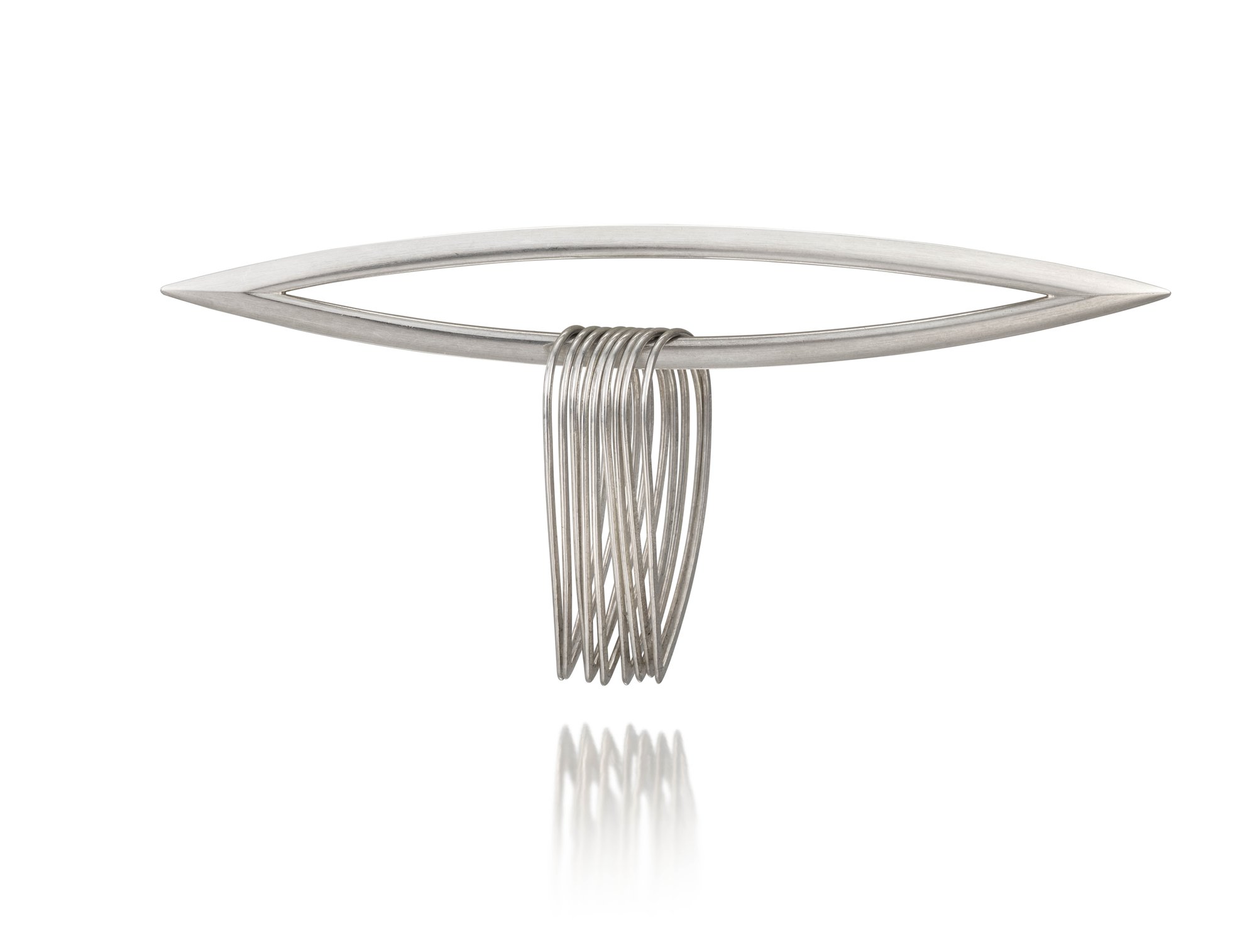
‘Spirit Level’ brooch, Dorothy Hogg, 1993-1994, silver. Photograph: Clarissa Bruce
The second piece newly acquired for the Company Collection is the ‘Gold Tipped’ brooch made in 2001. Hogg enjoys the freedom she feels working in silver, and the repeated oxidised silver cones with their 18 carat gold ‘tips’ which make up the circular form of the brooch exemplify both the beauty of Hogg’s muted colour scheme and her mastery of the hollow form, which gives volume without weight. The circular form has a long history in jewellery, and Hogg describes the piece, made shortly after the Millennium, as being ultimately about the passing of time. Hogg produced a selection of linear brooches around the same time, with varying numbers of silver cones fixed in a straight line. She wears one herself which features twelve gold-tipped cones, perhaps representing the months of the year.
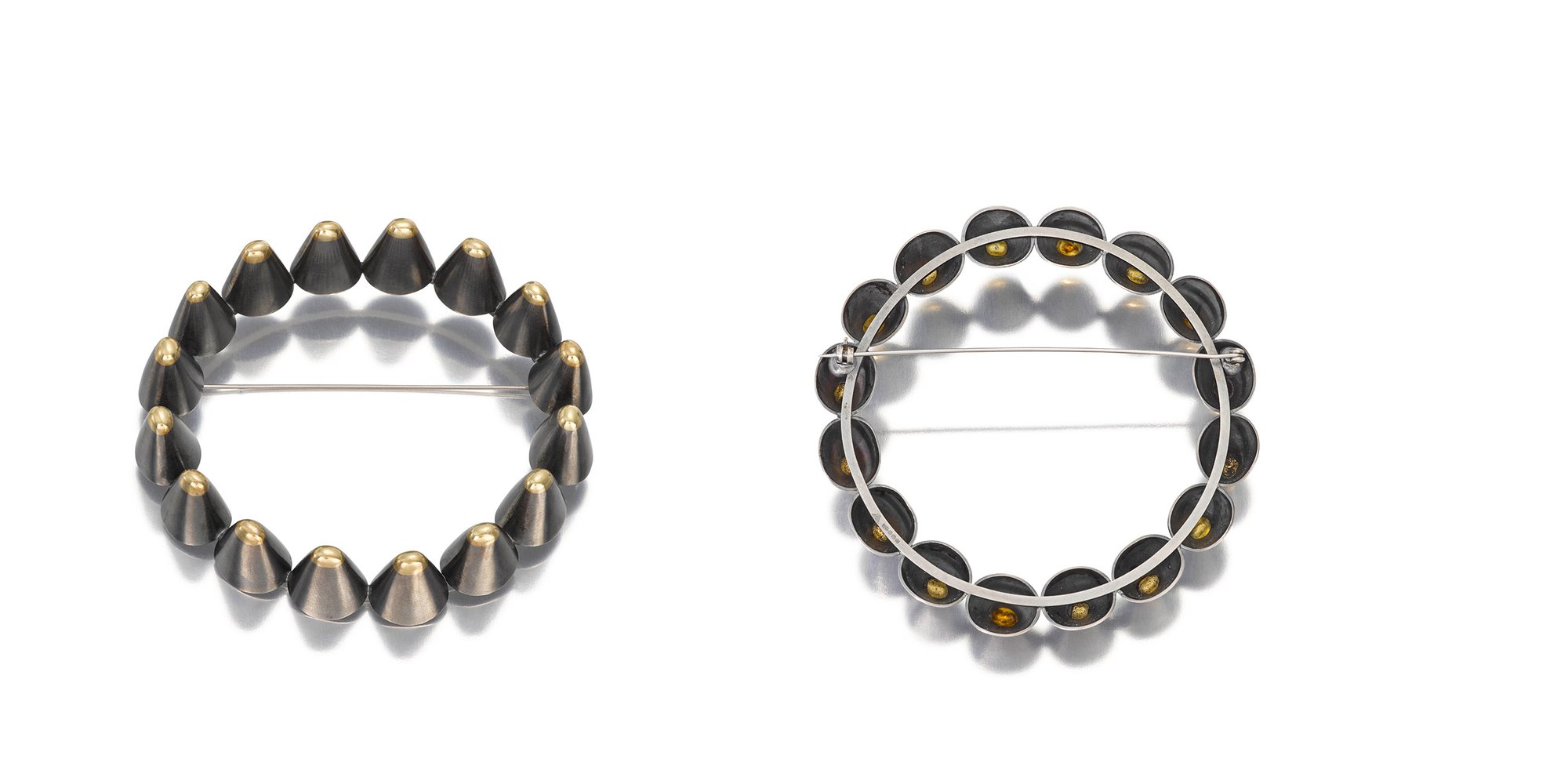
‘Gold Tipped’ brooch, Dorothy Hogg, 2001, oxidised silver and 18 ct gold. Photograph: Clarissa Bruce
In 2001 Dorothy Hogg was awarded an MBE for her services to silversmithing and jewellery. When she walked across the presentation room at Buckingham Palace to receive the award, her husband and son, sitting in the audience, heard the tinkling sound made by the bell-like neckpiece she was wearing. Hogg’s ‘Zig Zag Dispersal’ neckpiece, a one-off piece she made in 2001 and wore to receive the MBE, is the third piece acquired for the Company Collection. Part of her sonorous, humorous Noisy Neckpiece body of work, it features an oxidised silver campanile-like form tipped with 18 carat gold at the top and 22 carat gold at the bottom, from which are suspended a group of bell-like elements which jangle and peal as they touch each other.
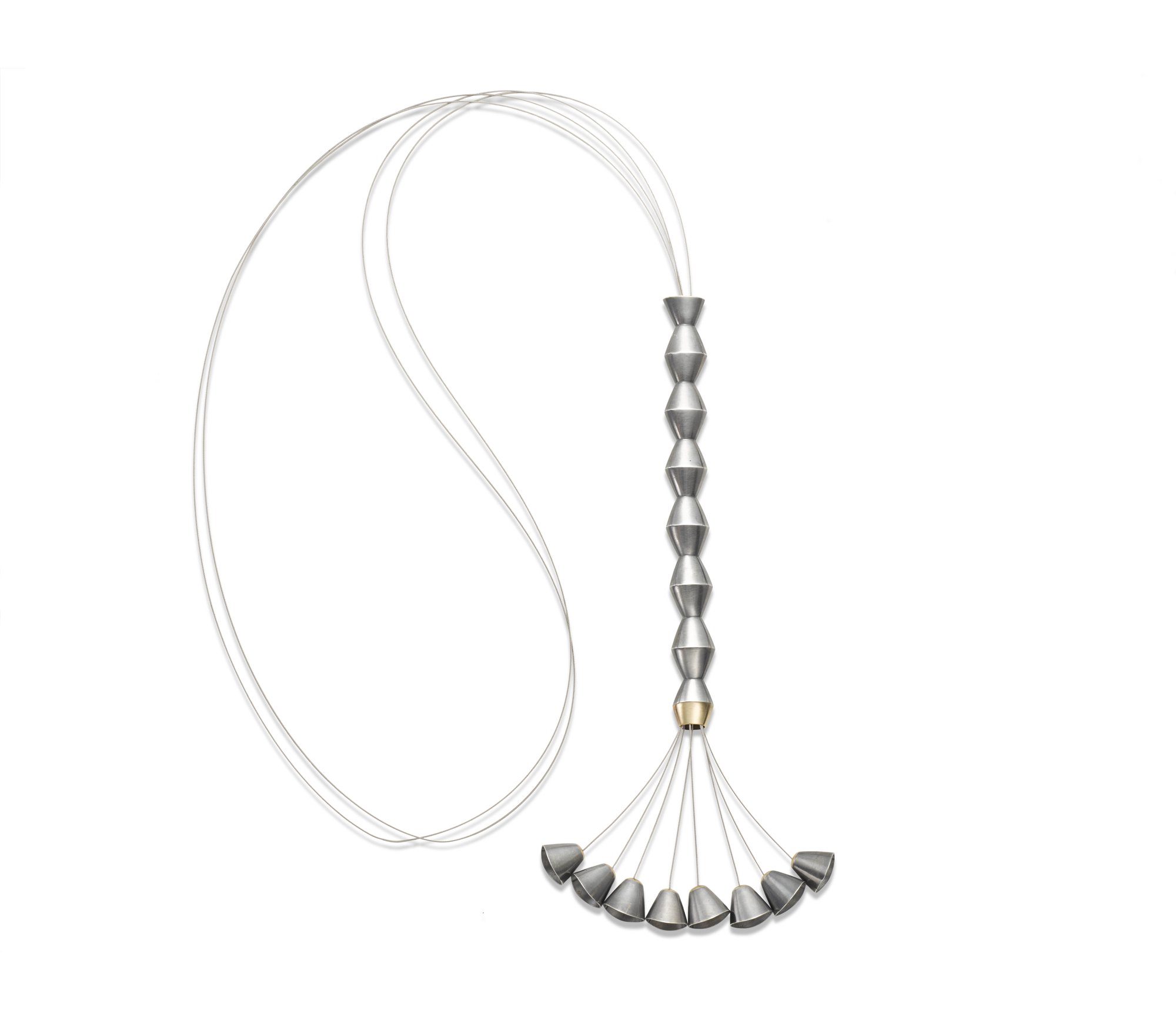
‘Zig Zag Dispersal’ neckpiece, Dorothy Hogg, 2001, mixed metal. Photograph Clarissa Bruce
In 2004 Hogg was developing another major body of work, the ‘Artery Series’. The Company has been lucky enough to acquire the first brooch in the series, Hogg’s personal favourite, which again features a handmade hinge and catch. Hogg is passionate about tube-making, and the piece is constructed from various sections of hand-drawn silver wire and tubing of different profiles, together with red faux coral beads. Again the relationship to the body is explicit; Hogg felt that for the pieces to be true to the concept, it was important for the handmade tubing to be hollow so that fluid could flow through unimpeded.
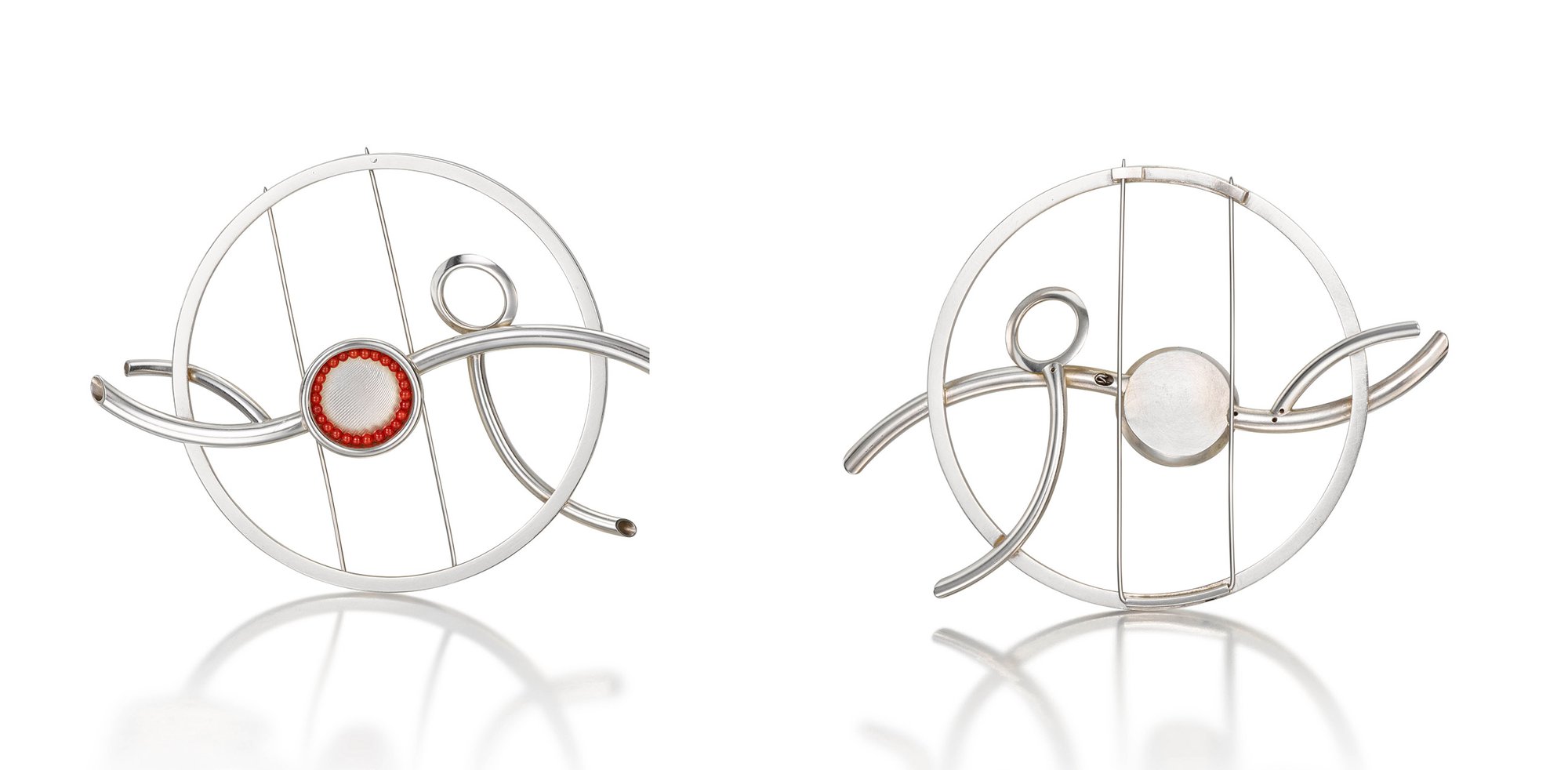
Brooch from the ‘Artery Series’, Dorothy Hogg, 2001, silver and faux coral beads. Clarissa Bruce.
The final new acquisition is a pair of Hogg’s iconic cube rings, made especially for the Collection in March 2021. The first is silver; the second has three silver ‘legs’ and one of 18 carat French green gold. Hogg has been making square rings since the 1970s and has made the uncompromising form absolutely her own. The way a piece of her jewellery will relate to the human form is paramount in her thinking, and the cube rings are unexpectedly comfortable to wear. Elements moving in different directions is a key characteristic of Hogg’s work, and one which is exemplified with great beauty and simplicity in the cube rings; each of the four ‘legs’ is at a diagonal, rising at one end and dipping at the other, so that each is simultaneously pulling away from the next.

Cube rings, Dorothy Hogg, 2021, silver and 18 ct green gold.
With characteristic modesty, when discussing her work and her chosen method of artistic expression Hogg repeatedly states that ‘It’s only jewellery.’ It may be ‘only jewellery’, but it is jewellery of such consideration and precision, and of such an expressive nature, that the significant body of Hogg’s work now in the Goldsmiths’ Company Collection represents the consummate skill of an unsurpassed craftswoman at key points throughout her life and career.
Dr Frances Parton
Direct quotes are taken from an interview between Amanda Game and Dorothy Hogg that took place on 18 March 2021 via Zoom.